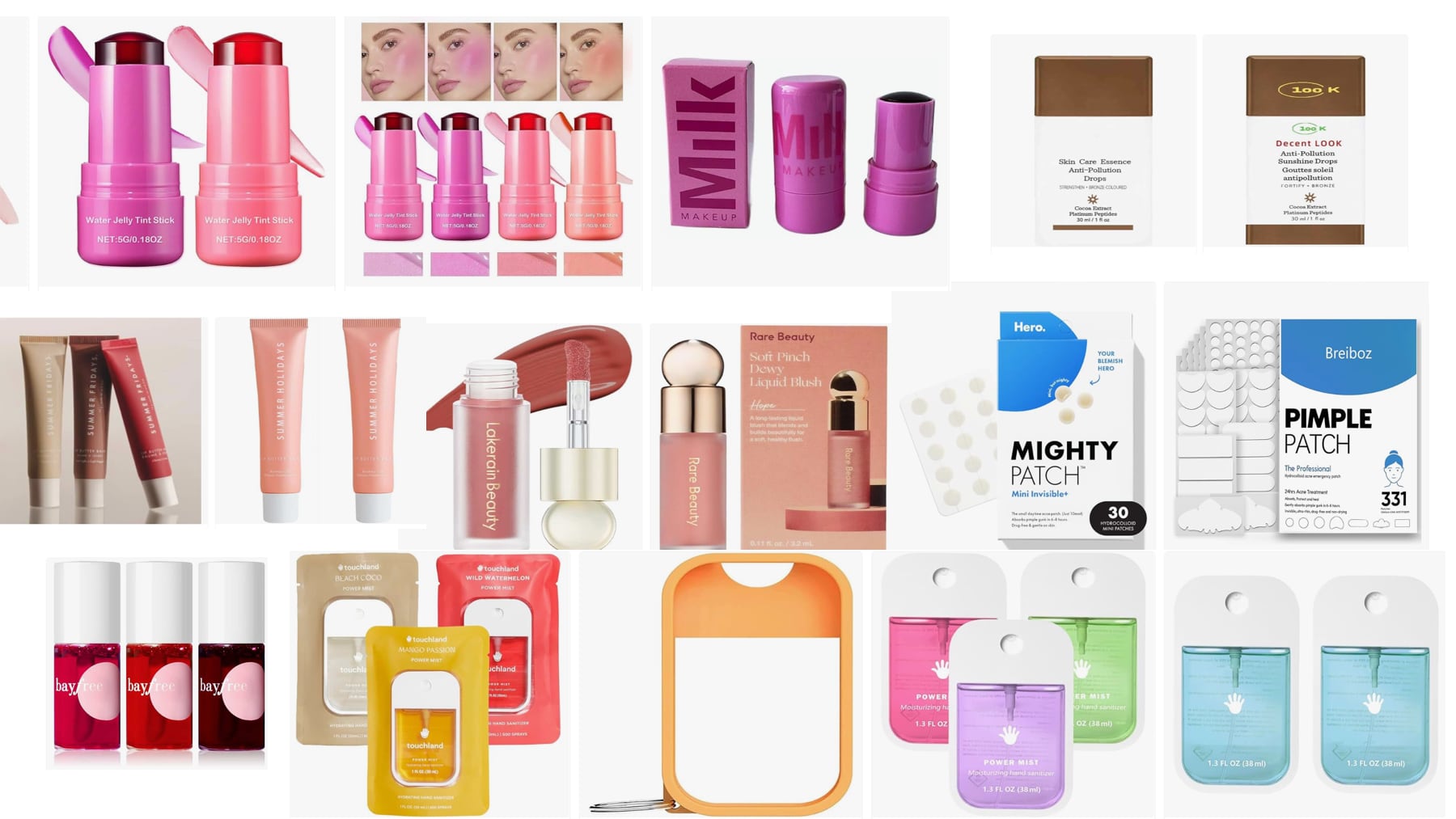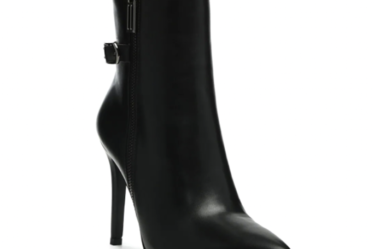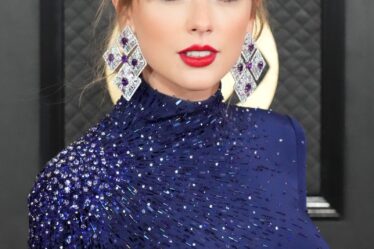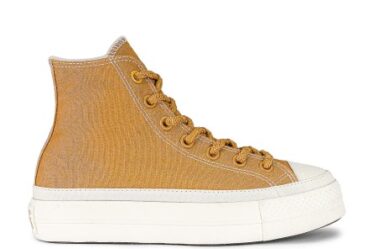
Search for any viral beauty product on Amazon and you’re bound to find it sitting alongside a lineup of imposters — bizarre knockoffs intended to pass as dupes.
Poised to become the largest beauty retailer in the US next year, Amazon is attracting a growing number of premium beauty brands, like Kiehl’s and Clinique, hoping to meet their customers where they already are. But in doing so, they’re also increasingly encountering unknown merchants hawking ambiguously branded counterfeits — and realising the e-commerce giant may also be an outsized source of intellectual property issues.
A search for Hero Cosmetics’ Mighty Patch acne stickers, Amazon’s top-ranked beauty product, yields Hero’s official listing next to another option from a brand called “Breiboz” with a nearly identical design. Queries for Milk Makeup’s viral Cooling Water Jelly Tint return two listings showing the product’s exact packaging by a seller located in China’s Guangdong province. One listing on a search for Rare Beauty’s Soft Pinch blush brings up an identical bottle and shade with the name “Lakerian Beauty” in Rare Beauty’s font. And consumers are embracing them: On Sep. 23, a Hero Cosmetics dupe with similar packaging from a brand called “Daolyo” even made it into Amazon’s top 100 beauty products ranking (though it’s since disappeared from the list).
Dupes are not a new phenomenon. But social media-viral beauty products are, and the online sales they generate can give agile dupe-makers an opportunity. When Touchland’s flat-lay hand sanitiser went viral, CEO Andrea Lisbona noted a proliferation in identical listings, some of which borrowed her brand’s photography, erasing only the Touchland logo.
“When a product goes viral, we see a lot of counterfeit activity start to arise,” said Madigan Lyden, senior director of brand strategy at e-commerce agency Front Row Group, which works with clients including Ouai, Bubble and Summer Fridays on their Amazon strategies.
For beauty brands, the “majority” of the dupes problem is happening on Amazon, according to Lyden. She said that this year, “counterfeit has really become a massive issue.” The group has dedicated more resources to brand protection, including hiring a new brand protection associate to help handle it.
Amazon has also been ramping up its intellectual property protection tools. But the problem is so pervasive that beauty brands have to take action themselves, too. They’re enlisting third-party services to track and report infringements as they pop up, while others are going straight to the source and suing manufacturers.
“If you think back to about 10 years ago, I’m not sure how somebody would find out about dupes. Now, it’s hard to not find out about it. If you’re on TikTok, or even if you go on Amazon and search for your favourite beauty brand and dupes, it’s going to pull to pull up a bunch of alternatives,” said Steve Strong, the COO at SuperOrdinary, a consumer brand accelerator that helps brands grow their Amazon business.
Playing Whack-a-Mole
There’s a fine, often blurry line between dupe and counterfeit. “Fast follower” drugstore brands like E.l.f. Beauty or Nyx contain their own brand identity and formulations, making similar, cheaper products that are often compared by influencers to premium and luxury counterparts.
Meanwhile, on Amazon, experts argue items more often fall squarely into the “counterfeit” category, even as sellers attempt to skirt its rules, due to the fact that brands will often file for intellectual property protection not only on their brand name and logo, but also on their packaging design.
Brands say they have a lot of hoops to jump through in order to get Amazon to take listings down. To make the case for a takedown, brands need to make sure they have trade dress protection on their aesthetic and design patents on their packaging design. Without patents or trademarks, “it’s open business for everyone that wants to do it,” said Lisbona.
“Anything that looks remotely like one of our brands, we submit it to Amazon as an infringement on the packaging,” said Strong.
But even if they have a strong case, it’s difficult to keep track of the sheer number of copycats out there. Hand sanitiser seller Touchland, for example, has copyright protection on its signature bottle design. It discovered 5,000 listings of intellectual property violations online globally in the past two months, including on Amazon and other retailers including Alibaba and Shein.
“It is almost like a whack-a-mole game. You shut down one, they reopen again,” said Lisbona.
For its part, Amazon has been increasingly adding new features and publishing its efforts to fight counterfeits. In 2022, it unveiled a programme called Amazon Patent Evaluation Express for patent enforcement. In its 2023 brand protection report, the company observed a 30 percent decrease in total valid reports of copyright infringement across all categories on the platform, and has implemented machine learning to detect infringements on “complex visual intellectual property.”
Straight to the Source
To tackle the counterfeits issue, some brands are circumventing Amazon entirely, going directly after the manufacturers minting the imposters themselves.
On Aug. 23, DIY lash extension brand Lashify won $30.5 million as well as a 30 percent royalty rate in a suit against Qingdao Lashbeauty Cosmetic Co., which a jury found was manufacturing lashes that infringed on three of the brand’s patents. Many of the infringing lashes were sold on Amazon, while others were distributed to legitimate brands, according to Lashify’s claims in court.
“Amazon is very, very scary for any inventor,” said Lashify founder and CEO Sahara Lotti. “They have the ability to completely bankrupt you in a matter of months.” Counterfeit sellers can “completely overflow the marketplace” to obscure the genuine article from a customer’s view, Lotti said. “It’s almost like it changes into an alternate reality.”
But going into full litigation is costly and risky, especially for small startups. According to Lotti, the main goal of the lawsuit was not intended to fully recoup losses, but to shut down future manufacturing of her brand’s dupes.
Because of the sheer scale, it’s likely near impossible to ever get the counterfeit problem completely under control. And some brands are gaining mainstream attention as they venture into the grey area of what constitutes a dupe.
Australian label MCoBeauty, for instance, proudly positions itself as a “luxe for less” dupes brand and shows up on Amazon listings with products showing an uncanny similarity to those of Charlotte Tilbury, Sol de Janeiro and more. But it has also inked partnerships outside Amazon: it is currently stocked at grocer Kroger and has done marketing campaigns with Paris Hilton and Camp Poosh.
“There are strict infringement and trademark laws that prevent brands from recreating exact packaging elements of other products. We ensure that all of our formulations and packaging comply with these regulations,” said Meridith Rojas, CMO at MCoBeauty.
To convince consumers to buy the real thing, brands need a compelling brand story and value proposition, said Strong.
Despite TikTokers’ obsession with all things dupe, beauty influencers are also helping to educate about the differences between legitimate dupes and counterfeits, warning their followers against buying fake beauty products from sketchy sellers on Amazon or TikTok Shop. But brands can’t rely on them alone.
“When you have such a big amount of infringements on a daily basis, you have to be on top of it,” said Lisbona. “It’s better to catch them very early on, rather than them being able to grow for years.”
Sign up to The Business of Beauty newsletter, your must-read source for the day’s most important beauty and wellness news and analysis.



